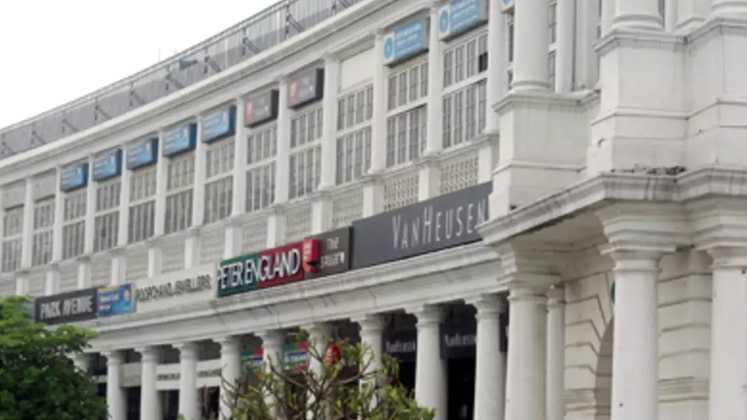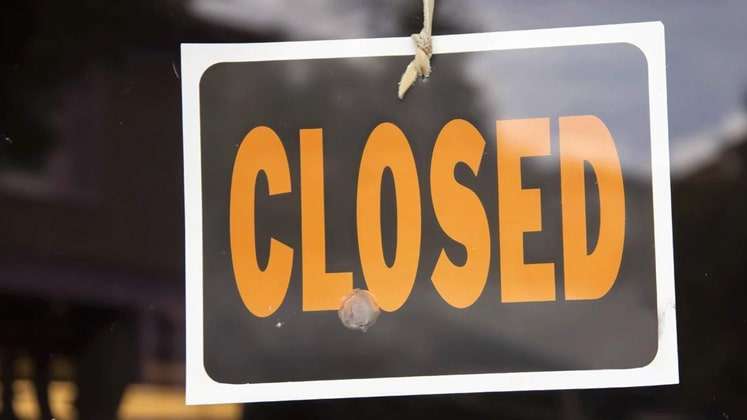
With the lockdown period extending till 3 May 2020, the Indian apparel retail industry that is already poised for a slow death, has gone deeper into the ditch, with a number of companies under the fear of being shuttered for good.
While the Indian apparel retail industry was slated for a growth at 13 per cent and was predicted to reach approximately US $ 124 billion by 2020, the outbreak has drastically changed the overall scenario with the entire industry on a standstill or even going backwards in time. Even as COVID-19 is continuously testing the businesses, it is hard to predict what the ultimate economic impact of the pandemic will be. The retail brands, meanwhile, have to safeguard themselves on three key parameters – disrupted supply chain, delayed unfulfilled customer orders and protection of internal stakeholders.
The current crisis has not only led to losses in jobs but also a fall in demand which will last for months to come. The consumers are filled with fear and are indulging in panic buying when it comes to grocery supplies and essential commodities, building a habit of curbing their desires which might ultimately trail along for longer than expected, thereby hampering the demand of the fashion products even after the lockdown is suspended. Kunal Mehta, Chief Operating Officer, Being Human Clothing , maintains, “These are unprecedented times, something no one was prepared for. This is different from the 2008-09 slowdown. Every year, brands plan their expansion and strategies. Sometimes, they foresee a slowdown and they plan for that. No one has ever planned for ‘zero sales’, ‘negative cash flow’ situation. Hence, the COVID-19 outbreak has had a huge impact on the apparel retail sector. Our costs, expenses and all the usual outflows continue, but there is zero revenue. It’s a massive financial crisis and thousands of jobs are at stake.”

The overall retail industry, already hit by the economic slowdown, is now threatened by the COVID-19 situation, with losses which are hard to ascertain. “The effect of this pandemic and the subsequent lockdown has resulted in an enormous setback to the retail industry. Due to mandatory closure of retail stores across India, retailers face imminent financial crises and insolvency, with stores at risk of shutdown and millions of job losses. Nearly 60 to 70 per cent of costs are fixed costs in the retail segment. Rents and salaries to employees make a large part of this cost. This, along with low margins, leaves businesses with limited flexibility. With stores and e-commerce businesses being shut, we have seen a 100 per cent fall in revenue. Economists predict that consumption will further fall by 25-30 per cent for the next 6 to 9 months post the lockdown revision, which in turn will amount to insurmountable losses for this industry,” asserts Ameet Panchal, Managing Director, Ethnicity . Also, since the outbreak and the lockdown came into effect during the start of the Spring/Summer season, the new collections by the retail brands are either at the store or stuck in transit or at the warehouse.
Revival steps – What and in what intensity
With the country in its second phase of lockdown and the increasing number of affected cases and areas impacted, the question remains – whether fashion industry, one of the biggest industries of the country, will be able to stop the economy from haemorrhaging? A number of online players including the likes of Amazon, Flipkart, ShopClues have strategised and started delivering essential goods in order to stay functional.
Even as there was a hint of positivity among retailers with the guidelines announced by the Ministry of Home Affairs (MHA), which stated lifting of restrictions on e-commerce firms to deliver only essentials with certain conditions from 20 April. These new enabling guidelines were to be applicable till 3 May when Lockdown 2.0 ends. However, within just 4 days of allowing the companies to sell mobile phones, refrigerators and readymade garments, the Government prohibited e-commerce platforms from selling non-essential items during the lockdown. Commerce and Industry Minister Piyush Goyal tweeted, “The clarification that e-commerce companies can only supply essential goods during the lockdown will create a level playing field for small retailers.”

The fashion retail industry is now looking at all possible scenarios – planning and financial forecasting – while also finding new perspectives to stay in touch with consumers. Even as a number of start-ups in apparel segment are accepting orders only to ship the merchandise post the lockdown period, the retail majors of the segment have stalled operations completely till the lockdown is lifted. Samir Jain, Executive Director and COO, Green Gold Animation Pvt. Ltd. , says, “We had made provisions in the month of March and created a back-up to work from home, but being into character merchandising and plush manufacturing, our factory has not been functioning completely. The industry has come to a standstill. Since it was the start of the season when we got into lockdown, there has been hardly any movement of stocks. Orders raised are put on hold or even cancelled. A month back, we were recruiting resources, thus cutting jobs is out of the question. However, the business will take more time to return to normalcy and to stabilise. This definitely will stay for long and we will take this period to upgrade our facilities, new developments, and focus on key clients. Besides, finances have been rolling slowly, making it difficult to operate the operational costs.” However, Ameet is certain that if the shopping malls are allowed to commence soon, Ethnicity will be able to achieve between 60 and 70 per cent of its current business plan.
Also Read : How the fashion industry is fighting the coronavirus crisis
Assessing the overall situation, the Retailers Association of India (RAI) maintained that apparel businesses could face a revenue loss of up to 40 per cent even as many small and medium enterprises in the apparel industry have already started contemplating closure of business. In line with this and the other drastic impacts of the ongoing pandemic, RAI CEO Kumar Rajagopalan points out the need for the Government to provide timely assistance for a short duration – around 2-3 months including the lockdown – which would help them survive, and in turn, protect the livelihood of the people dependent on them.
After the opening of the market post the COVID-19 crisis in China, the apparel garment retailing has witnessed a 59 per cent decline. Meanwhile, a study by Capillary Technologies on the impact of COVID-19 suggested that the short-term impact of the pandemic on retailers will be severe and the most resilient retailers surviving this crisis will be the omnichannel retailers. The report also said that at the company level, offline teams should coordinate with the online teams to divert the traffic to their e-commerce websites/apps and clear out the inventory. Furthermore, with sales going to zero and the rising order cancellations from consumers, retail brands need to manage cash flows, adjust sales forecasts, revise inventory projections, examine marketing strategies and introspect how operations will be carried out. Kunal Mehta ascertains that with the support of the Government, the recovery chances will be faster. “We will be definitely looking at a different type of consumers in the future. The consumer buying pattern and style will not be the same. There will have to be changes in business models. Brands will have to adapt and use new technology to drive sales. Staying connected with the consumer will be essential. In the next season (Autumn/Winter), the focus will be on reducing inventory,” he states. Meanwhile, Ethnicity has already put its design team to work on what the consumers would want post COVID-19, monitoring customer behaviour based on social media. Apparel brands are also expected to offer large-scale discounts to clear old stocks and also entice the consumers once the lockdown is lifted, industry leaders have confirmed.
Overall, the lockdown will squeeze the fashion and lifestyle segment from the current base of Rs.5,32,00 crore to Rs.4,76,00 crore in FY ’21. Since this segment works on a cycle that involves the entire value chain involving fabric/material suppliers, artisans and retailers who sell the merchandise over a period of 3-4 months, the disruption of the overall cycle will lead to sales loss of not only one month, but will drag on for the entire year. While a number of associations and retail heads are writing to the Government on the possible measures that can help keep the industry afloat, the days ahead would decipher the further course of action as well as the destiny of the sector.
Also Read : Fashion in the time of COVID-19: Indian designers share their strategies to stay afloat

Post a Comment